
A Kanban Board is an effective tool to self-organized control “work in progress” in small and mid-sized initiatives by the team. Everybody directly sees the tasks to do, the ones in progress or done. You only need a bit of discipline to have everyone place his task appropriately to progress on the board, but that’s not all too much, and the advantages for the team work are obvious.
Project management is needed when the amount of tasks gets bigger, when someone is required to keep oversight, to draw up the tasks on the Kanban Board and coordinate their execution. Or if there are multiple teams with individual Kanban Boards where the deliverables need to be put together at certain points. It is the (well-versed) project lead’s decision to apply a classical planning and agile execution in a hybrid way or control with a „Scrum of Scrums“ – according to his preferred project approach.
Read more Lessons Learned…

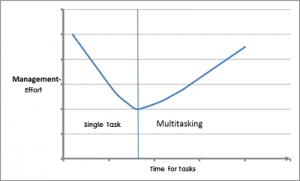



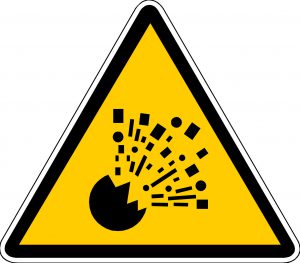


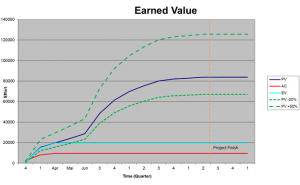

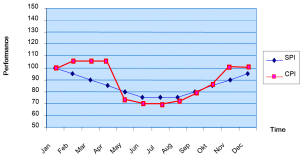
 Today I’d like to tell you about two examples that show why Earned Value Management is not as popular as it should in projects here in Germany, and how, in these cases, reservations have been overcome and implementation was completed successfully. I’d first like to mention that I’m a “fan” of this method, just because it is universal and uncomplicated to use, and because it provides a valid status determination as well as forecasts for Project Management with a few simple formulas.
Today I’d like to tell you about two examples that show why Earned Value Management is not as popular as it should in projects here in Germany, and how, in these cases, reservations have been overcome and implementation was completed successfully. I’d first like to mention that I’m a “fan” of this method, just because it is universal and uncomplicated to use, and because it provides a valid status determination as well as forecasts for Project Management with a few simple formulas.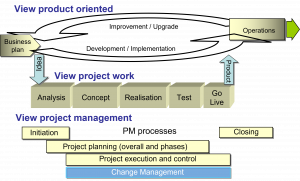 and during this time developing something new and unique (product or
and during this time developing something new and unique (product or  There is very few focus on skills or an education in what I understand with project management, i.e. professional handling of uncertainty, risk, changing scope, schedule and cost planning, team building, team and supplier coordination, communication, leadership etc., actually planning and controlling the project. It seems to be not critical or necessary in this kind of fairly controlled environment, or it is thought to be easily done “at the side”. In many companies there is a technical lead responsible for this kind of work, and the project managers often care for many projects in parallel.
There is very few focus on skills or an education in what I understand with project management, i.e. professional handling of uncertainty, risk, changing scope, schedule and cost planning, team building, team and supplier coordination, communication, leadership etc., actually planning and controlling the project. It seems to be not critical or necessary in this kind of fairly controlled environment, or it is thought to be easily done “at the side”. In many companies there is a technical lead responsible for this kind of work, and the project managers often care for many projects in parallel. creative activities are necessary besides technical work. Therefore the presence of uncertainty and risk is incomparably higher, exchange of ideas, team communication and collaboration are critical success factors.
creative activities are necessary besides technical work. Therefore the presence of uncertainty and risk is incomparably higher, exchange of ideas, team communication and collaboration are critical success factors.